Copyright 2020 - 2021 irantour.tours all right reserved
Designed by Behsazanhost
Bistoon petroglyph: Achaemenid Illustrated History
Bistoon petroglyph: Achaemenid Illustrated History
Kermanshah, with its untouched nature and climate, is one of the most beautiful and historic cities in Iran. The name of this city is coming after a mountain, which is reminiscent of bravery and legends. Bisotoun Mountain was recorded on the Word Heritage List. But, the oldest works of Bisotoun belong to the Middle Paleolithic period and the latest one is related to the Safavid era. However, its reputation definitely relied on the inscription of Dariush I of Achaemenid (486-521 BC), which is engraved at an altitude of 80 meters from the foot of the mountain.
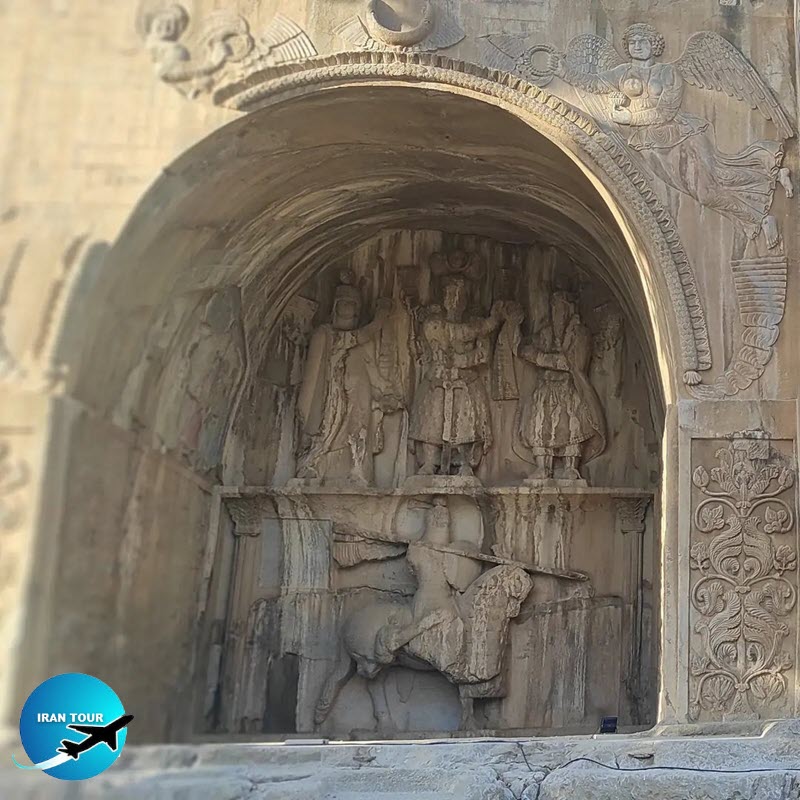 |
According to archeologists, the ancient inscription is the largest and most important epithet in the world and the most authentic record ever recognized in the world. But, unfortunately, some parts were destroyed and illegible due to the wind and water erosion, and some others by the ignorance of those Iranian who could use the patterns and lines as shooting targets. There are many spectacular ancient monuments on Bisotoun, which means the place of the gods. If we want to have a quick look at them, some of them should be mentioned as Barnaaj which dated back to the period between the Medes to the Sassanid era.
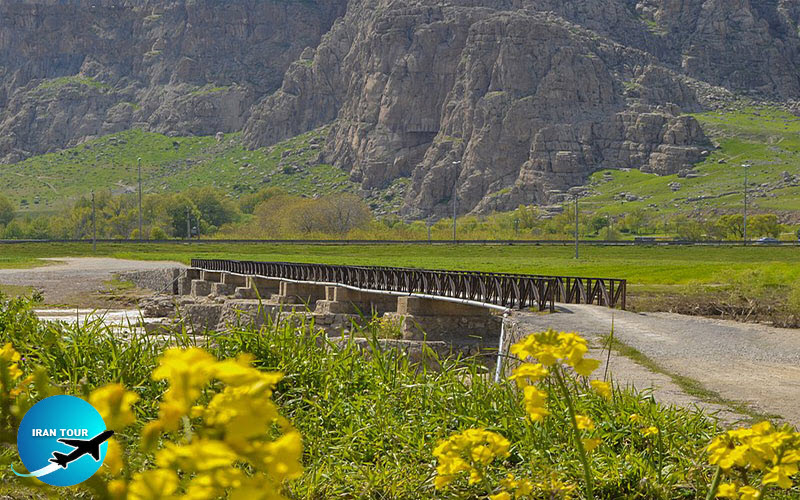 |
Khosrow Bridge
Khosrow Bridge was located on the Gamasiab River and its name and style indicate that it was built in the late Sassanid period and possibly in the period of Khosro II, Parviz.
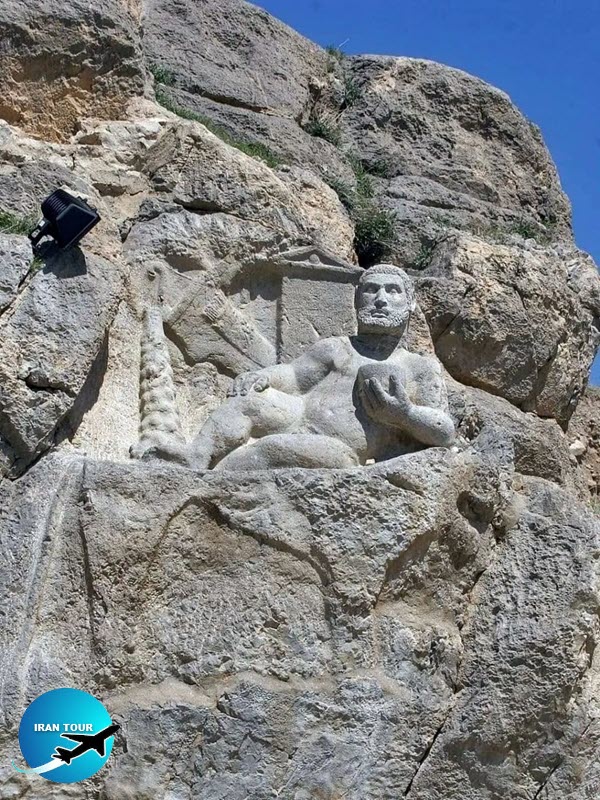 |
Hercule statue
The statue of Hercules, the Greek god of war is considered another monument that belongs to 153 BC, the Greek-Cypriot era, the time when the Greek gods were worshiped in Persia. This place was discovered in 1958 during the construction of the Hamedan-Kermanshah road.
 |
Safavid Caravanserai
Safavid Caravanserai of Bisotun is another work from the Safavid period in this area. The building was completed during the reign of Suleiman ! with the help of his grand vizier, Sheikh Ali Khan Zanganeh. The unfinished Sassanid Palace and Ilkhani Caravanserai architectural style and surrounding evidence show that they belong to the late Sassanid works. In addition, it is the remain of Bisotoun, on which a caravanserai was built later during the Mongol Ilkhan times and some parts are still remaining. However, it is the most famous historical record of this region and the earliest manuscripts of Persia among the inscriptions and embossed patterns of Bisotoun, which was written in three languages including Elamites, Babylonians, and Ancient Persians, and represents how Darius of Achaemenid defeated the invaders.
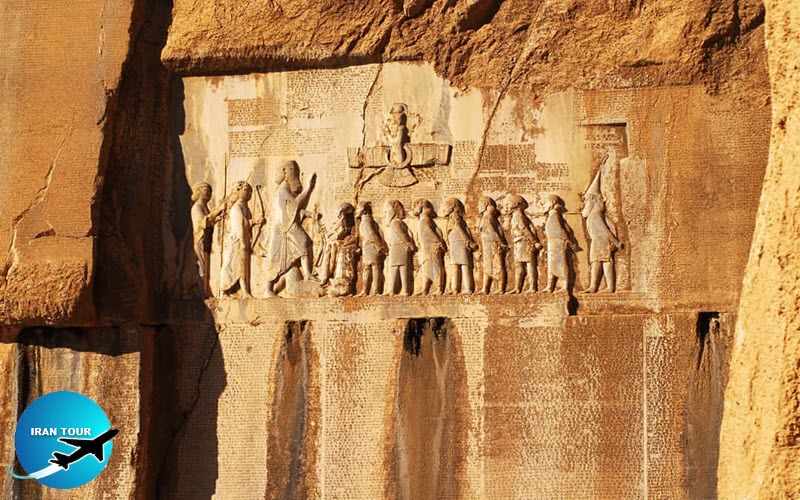 |
| Bistoon or Darius bas-relief - Registered in UNESCO |
Darius petroglyph
The story of the Darius inscription, known as "Bisotoun inscription", is related to the time when Cambyses, the son and the successor of Cyrus conquered Egypt. One of the Magi called "Gaumata" rebelled and introduced himself as Bardiya the brother of Cambyses. It was when Cambyses killed his brother before going to Egypt for the fear of claiming the throne in his absence. After three years of forgiving tax, he succeeded to persuade others to obey him and challenged Cambyses and the Achaemenid dynasty. Cambyses quickly returned to Persia to regain his throne, but he died suspiciously in the middle of the way. In this situation, it seemed that there was no other obstacle to the Gaumata, but seven of the Achaemenid nobles led by Darius revolted and overthrew him. Thus, Darius, related to another branch of the Achaemenid dynasty, sat on the throne and this kingdom and the reign were inherited by him.
 |
Darius ordered to transcribe the story of such a great victory, which was saving the Achaemenid dynasty from certain collapse on the wall of Mount Bisotoun. At that time, Bisotoun Mountain was not only religiously important but more importantly, it was located on the side of the western and central highway of Persia to Mesopotamia and was exposed to the passengers and caravans.
Archaeological investigations and historical research indicate that this inscription was not created in one stage. In the first stage, the figure of Darius, while the eight handtied Gaumata's accomplices were lining up in front of him,Gaumata himself was trampled under his feet. Along with the inscription of cuneiform and Elamite language on the rocky cliff, the figure of Fravashi is seen above the figure of Darius and the captives, and an archer and a lancer stand behind Darius.
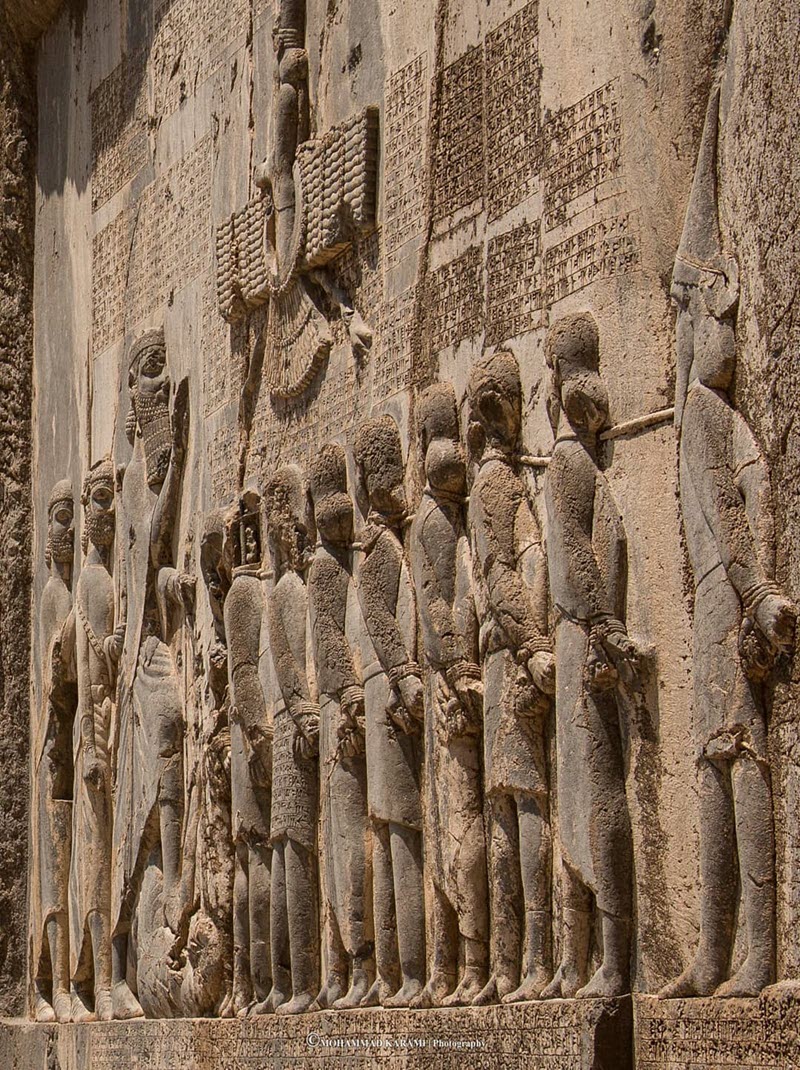 |
The most important statements of Darius on this inscription are as follows: introducing Darius and his Empire, the story of the Gaumata's rebellion and its suppression, the story of the repression of various insurrections in the lands of Elam, Babylon, Media, Part, Pars, Armenia and Marv, the emphasis on the truthiness of the provisions of the inscription, being Darius innocent from filth, lying and criminality, requesting the posterity for preserving the inscription and praying for its protectors and curse on those damaged the inscription.
In the following periods in which the languages and the ancient lines were forgotten, the Bisotoun inscription also became illegible. Not only no one could read the text, but also it was not clear at all to whom and to which period it belongs. At the same time, the inscription of Dariush and other sculptures on this mountain that remained from the Parthian and Sassanid periods were attributed to Farhad and his fiery love to Shirin, and they found a great place in Persian texts and proses.
Henry Rawlinson is the first person who was able to read the inscription. In the 1830s and early 1840s, he was serving as an officer in the Indian Army of England in the western part of Iran. He succeeded in deciphering the inscription and did the first translation. He was later appointed the British minister in Iran in the late 1850s.
After him, other people followed his path and produced more precise translations of the Bisotoun inscription.
- Details
- Category: What to see in IRAN













